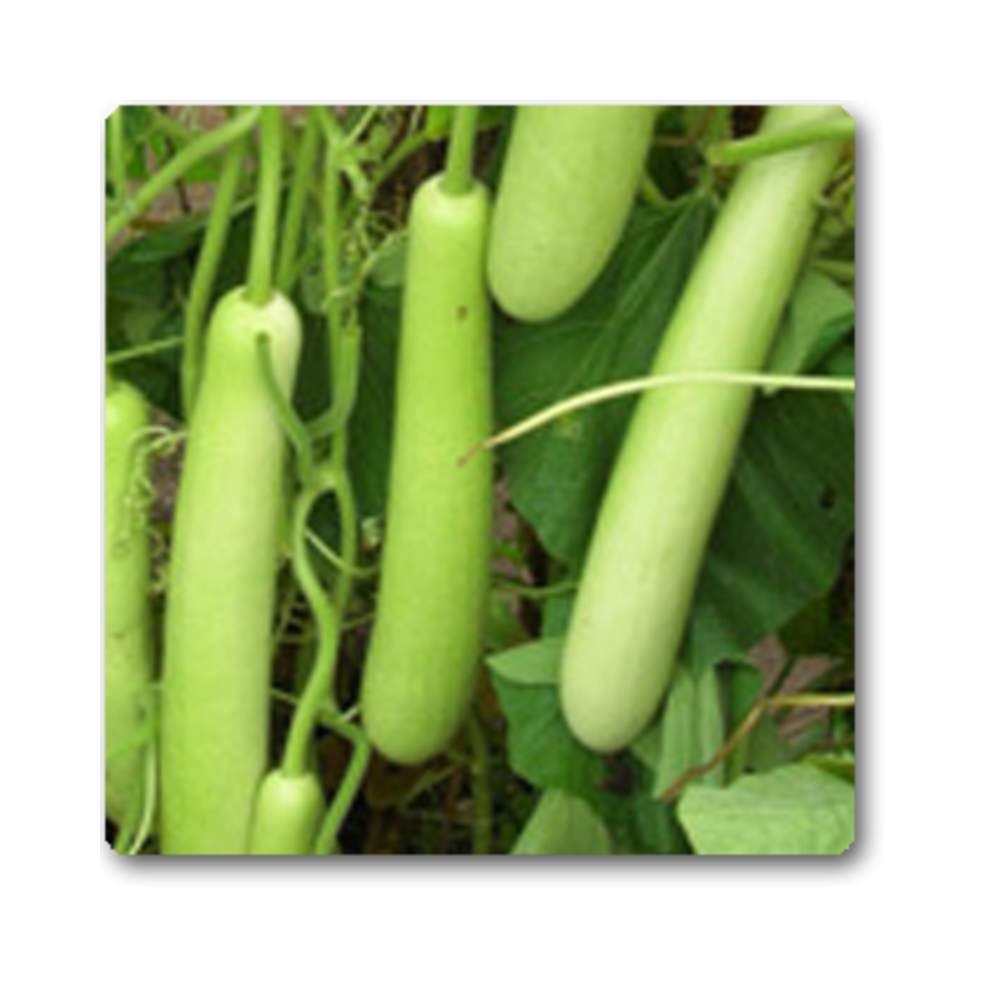



Bottle gourd is a vigorous, annual, running or climbing vine with large leaves and a lush appearance. It grows fast and may begin to flower only 2 months after seeding. The vine is branched and climbs by means of tendrils along the stem. The foliage is covered with soft hairs and has a foul musky odor when crushed. The leaves of the bottle gourd are up to 15 inches wide, circular in overall shape, with smooth margins, a few broad lobes, or with undulate margins. Leaves have a velvety texture

Security policy visit http://nurserynature.com/content/10-security-policy

Shipping & Delivery Policy visit http://nurserynature.com/content/1-delivery

Cancellation & Refund Policy visit http://nurserynature.com/content/6-aeu-legal-revocation-terms
Bottle gourd is a vigorous, annual, running or climbing vine with large leaves and a lush appearance. It grows fast and may begin to flower only 2 months after seeding. The vine is branched and climbs by means of tendrils along the stem. The foliage is covered with soft hairs and has a foul musky odor when crushed. The leaves of the bottle gourd are up to 15 inches wide, circular in overall shape, with smooth margins, a few broad lobes, or with undulate margins. Leaves have a velvety texture because of the fine hairs, especially on the undersurface. The bottle gourd flowers are borne singly on the axils of the leaves, the males on long peduncles and the females on short peduncles. The flowers are white and attractive, up to 4 inches in diameter, with spreading petals. The ovary is inferior and in the shape of the fruit. Otherwise, the male and female flowers are similar in appearance. The anthers are borne on short filaments grouped at the center of the flower. The stigmas are short, thickened, and branched. The brownish seeds are numerous in a whitish green pulp. Each seed is somewhat rectangular in shape with grooved notches near the attached end.
Bottle gourd Planting & Care
Season
january-March and September- October are the ideal seasons. For the rainfed crop, sowing can be started after the receipt of first few showers during May-June .
Varieties
Bio gaurav,warad,8 no,supriya are high yielding varieties.
Seed rate: 5.0-6.0 kglha Spacing: 2.0 m x 2..0 m Sowing
Pits of 60 cm diameter and 30-45 cm depth are taken. Well rotten FYM and fertilizersare mixed with topsoil in the pit and seeds are sown @ 4-5 per pit. Unhealthy plants are removed after two weeks and only 3 plants are retained per pit.
Manuring
Apply FYM @ 20-25 tlha as basal dose along with half dose of N (35 kg) and full doses of PzOs (25 kg) and KzO (25 kg). The
remaining dose of N (35 kg) can be applied in several split doses at fortnightly intervals:
Aftercultivation
During the initial stages of growth, irrigate at 3-4 days interval, and alternate days during flowering/fruiting. Irrigation at 15 mm. CPE (approximately at 3 days interval for sandy loam soils) is more economical than irrigating once in two days especially during summer months for. water economy.